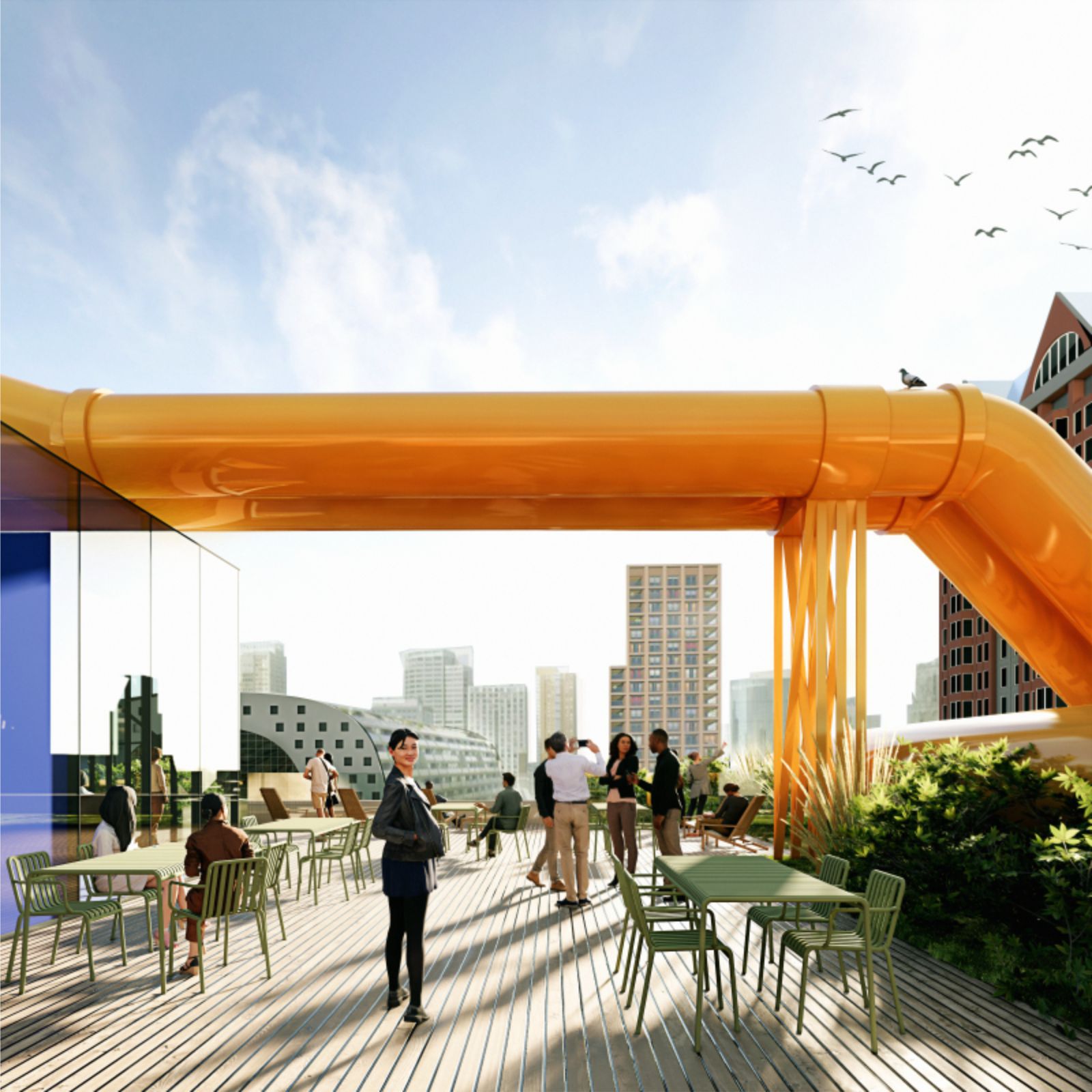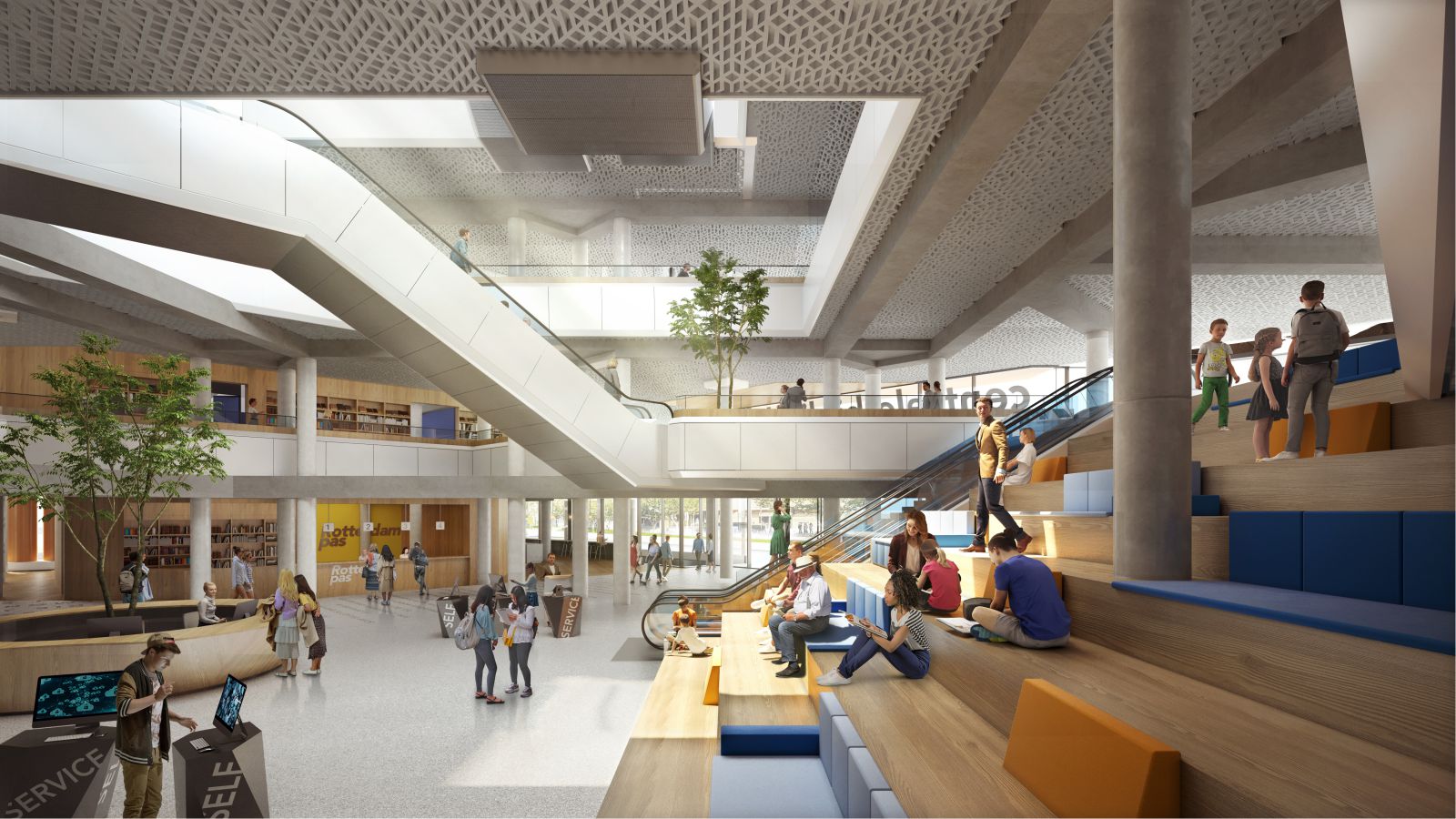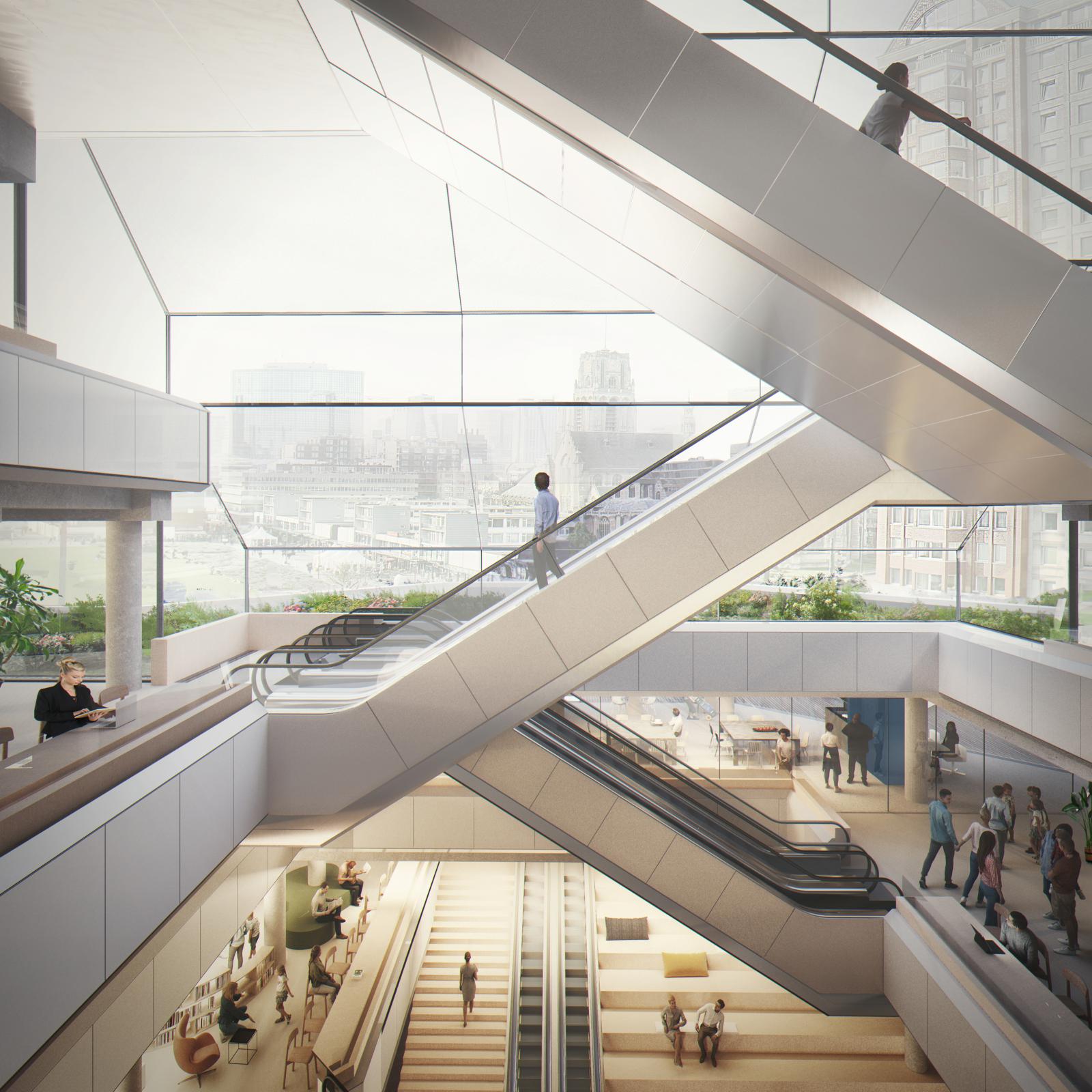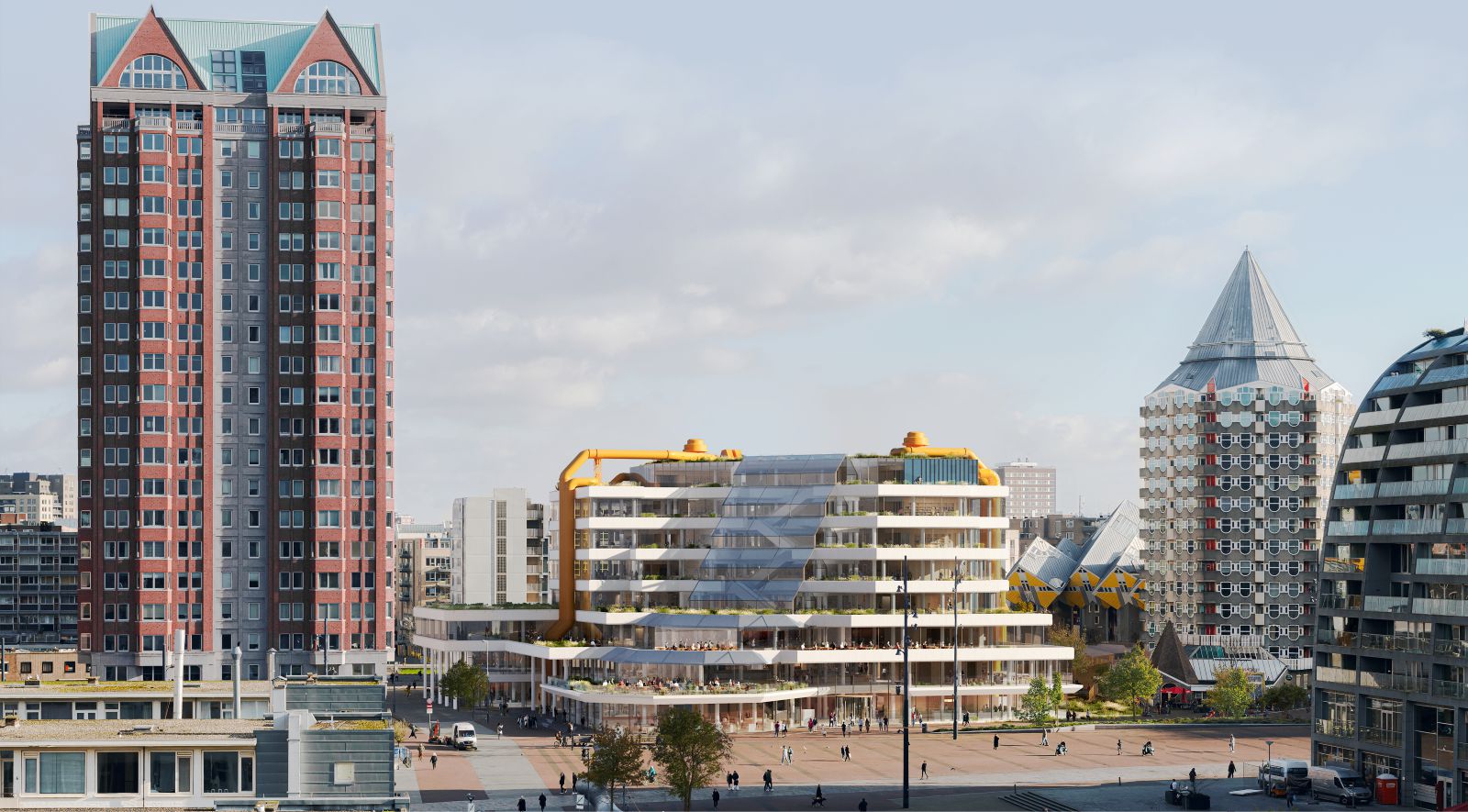The City of Rotterdam and the Rotterdam Public Library selected Powerhouse Company, Atelier Oslo, Lundhagem, DELVA Landscape Architecture & Urbanism, Buro Happold, and ISIS Bouwadvies to renew the Rotterdam Central Library, a city landmark from the early 1980s designed by Van den Broek & Bakema. The team was chosen out of five leading (inter)national consortia for the high-profile commission to upgrade the library.
Construction is expected to begin late 2025 and be completed by the end of 2028, the year marking the building’s 45th anniversary. The new design – a casebook example of radical reuse that transforms a 1980s building into a future-proof contemporary library – is the result of the combined expertise of Powerhouse Company, Atelier Oslo, and Lundhagem. The latter two offices were responsible for the design of Oslo’s Deichman library (2020), winner of the 2021 Public Library of the Year Award.
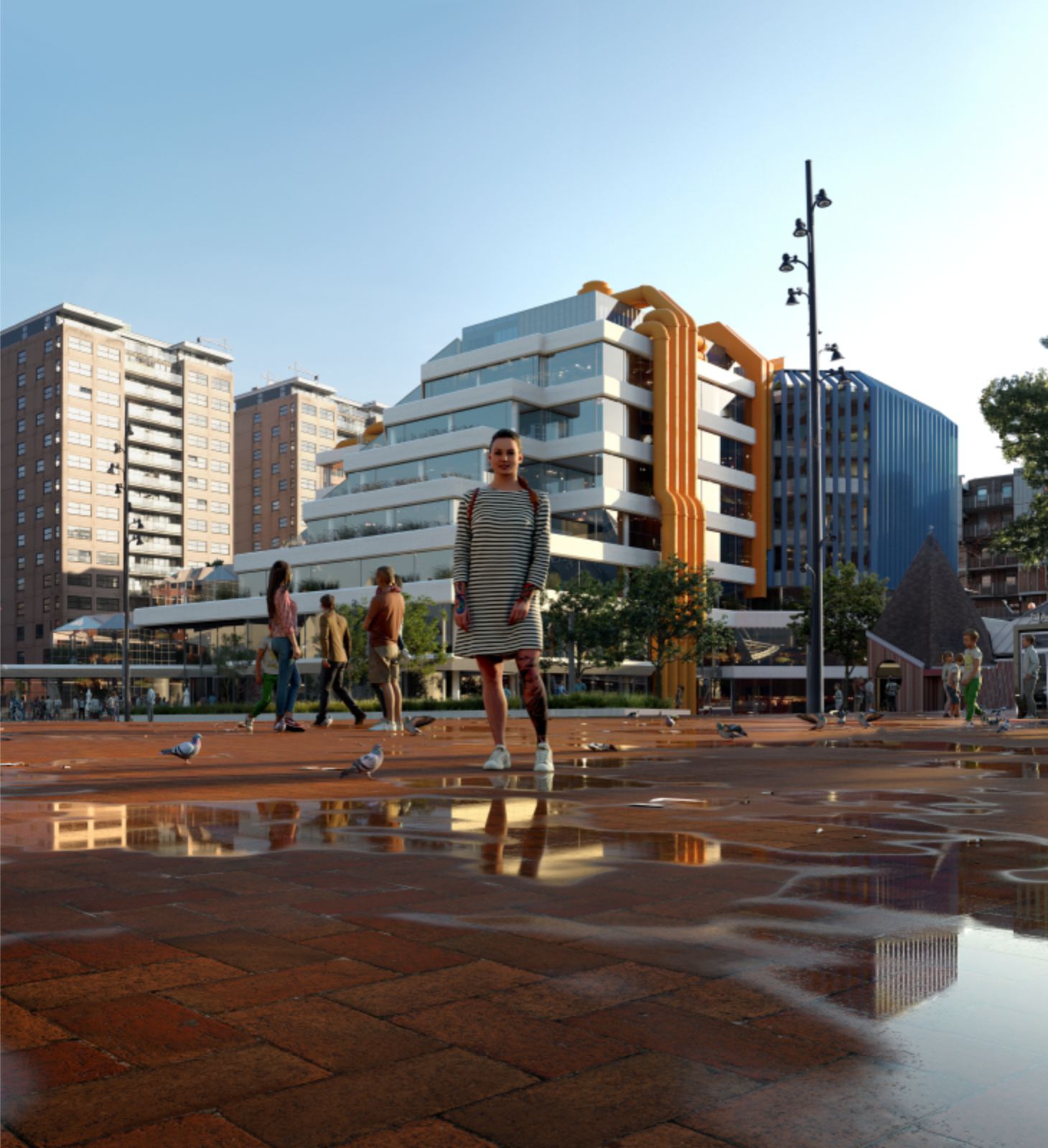
Urban living room of the future
The design is a striking example of reuse, and its growing importance in urban architecture. In the interests of sustainability and preserving the memory of the city, the last-century library is successfully reinvented for a new era. For the team, this was a golden opportunity to optimize the original, spectacularly eccentric, design, which was downgraded by budget restrictions.
The renewal reinstates the original ideas behind the library and creates an intimate ‘living room for the city’, while enhancing an iconic piece of public architecture for a city synonymous with experimental buildings and bringing it in line with contemporary standards of sustainability and circularity. The team of architects redesigned the interior of the library by opening it up on all sides, adding a transparent extension with an atrium at the back and transforming closed storage areas into a variety of welcoming spaces.

Story of a landmark
Rotterdam Central Library is one of the city’s best-known landmarks, instantly recognizable with its clusters of big yellow tubes that evoke the Centre Pompidou. The library fills a square city block and a diagonal cut introduces an orientation on the market square and brings light into the atrium. Over this void a glass ‘waterfall’ reveals a tower of crisscrossing escalators that run the full height of the building.
Built by Van den Broek & Bakema with Hans Boot as project architect, the library opened in 1983 to a mixed reception. It remains a controversial yet important piece of architecture, marking Rotterdam’s transition from industrial port to knowledge center and from post-war monumentalism to human-scale urban planning. To paraphrase a former Rotterdam local government official: love it or hate it, the library is undeniably an icon.

The building expresses the views of its designers that “public buildings should stand out in a city,” as Boot put it. For Bakema, both buildings and city should include a dialogue between being alone and togetherness, and between the large and small scales. Unfortunately, the architects’ vision was not fully matched by the execution of their design, which was pressured by budget constraints.
Restoring the vision
The former budget particularly impacted the façade with its white bands and strip windows. Transparency was sacrificed for cost-effective but heavy window frames. The redesign transforms the glass layer into a seamless expanse, and this new translucency creates a light, fluid spatial experience with unbroken views outside.

The lower crisscrossing escalators, visible through the glass ‘waterfall’, were somehow wrongly positioned during building, compromising the rhythm of the design, so the new design corrects their alignment. Connectivity is enhanced by adding wooden amphitheater stairs between the floors. The yellow tubes that were originally meant for air conditioning remain in use, now taking in untreated air and expelling used air.
Extended to the ground, it makes them part of the streetscape, tangible and approachable, and even more central to the building’s identity. Extra floor space, as well as extra light and transparency, are added by a new glazed timber construction at the back of the library – this is blue, like the former storage area it replaces, ensuring that the library keeps its color signature of white, yellow, and blue. The new extension combines modern circularity with the eccentric language of the original building.


Making an entrance
The secluded main entrance of the original design was always perceived as isolated, so new, more central entrances were added on every side. These enhance the permeability of the ground-floor space – open to the surrounding city fabric, including the lively market square, and as accessible and welcoming as ‘the city’s living room’. The library’s neglected corner volume, on the square, is transformed by the new layout into an appealing terrace.
Inside, the interiors have an intimate, relaxed, and domestic quality with a sequence of spaces capable of housing a lively and flexible program that features everything from a cooking workshop to a kids’ climbing wall – as well as plenty of places for studying, learning, reading or simply browsing. The upward progression of the spaces culminates on the seventh floor, which houses a green and silent reading room on one side, and on the other, a more extravert terrace with wonderful views of the city – the (literal) high point of the visitor’s journey through the building. Source by Powerhouse Company, Atelier Oslo, and Lundhagem and images Courtesy of Powerhouse Company.


